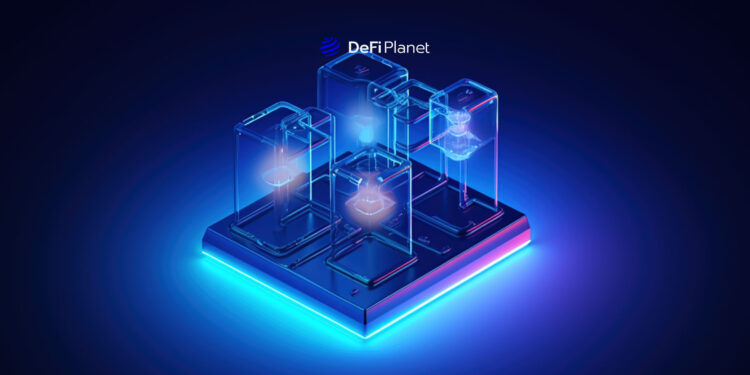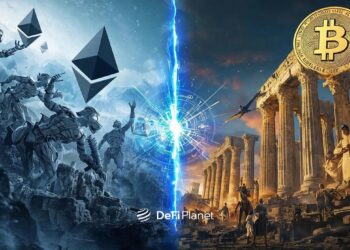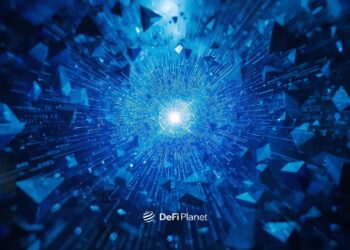Last updated on June 26th, 2025 at 02:10 pm
As blockchain networks like Ethereum and Bitcoin continue to scale in usage, they face growing pressure to meet the demands of millions of users while maintaining speed, affordability, and security. Traditional blockchain architecture, which is often referred to as monolithic blockchain, integrates all the core functions of blockchain, which include consensus, execution, data availability and settlement, into a single layer where every node on the network is responsible for performing all these tasks.
Validating transactions, executing smart contracts, storing and broadcasting data, etc, are among such tasks that typical monolithic blockchains undertake and while this unified structure allows for a high degree of security and decentralization, it also imposes significant limitations on blockchain scalability and performance of the blockchain infrastructure. Network congestion, high gas fees, and long confirmation times have often characterised these legacy systems, and these monolithic blockchains often struggle to support the growing demands of high throughput applications like Decentralized Finance(DeFi), NFTs and blockchain-based gaming, leading to the need for flexible and scalable alternatives.
Modular blockchains like those used in Celestia and EigenLayer have been proposed as a solution to these bottlenecks because, unlike monolithic systems, these modular blockchains separate the fundamental layers of blockchain into independent and specialised components. Each layer can then be optimised to work together as part of the blockchain infrastructure, making them more flexible, scalable, and efficient, thereby unlocking new design opportunities previously impossible or impractical to achieve.
This article will explore how modular blockchains work, why they matter, the key players in this space, and what this shift means for the future of Web3 infrastructure. Whether you’re a developer, investor, or simply a curious enthusiast, understanding modular blockchain architecture is essential for grasping where the technology is headed and how it can change the game for good.
Understanding Modular Blockchains
When we speak of traditional blockchains like Ethereum and Bitcoin, we often talk of infrastructure operating as monolithic systems with tightly integrated functions. These functions, which include networking, consensus, and data storage, make up these systems’ core. While such a design ensures security and decentralization, it often hampers interoperability, scalability, and adaptability. These systems usually have all their functions tightly combined in one layer, making it hard to make changes without affecting the whole system.
Modular blockchains, on the other hand, take a very adjustable approach with their architecture in that, instead of combining everything into one layer, they separate these core functions into individually distinct modules, each handling a specific function. This allows developers to customize and upgrade individual components without overhauling the entire system, leading to a better and more efficient performance and versatility for the systems in the long run.
For instance, Hyperledger Sawtooth, an open-source project under the Hyperledger umbrella, exemplifies this modular design because it separates the core ledger from the application environment, enabling developers to create applications in various programming languages without interfering with the core blockchain system. This separation makes application development simple while maintaining system security and performance.
The Advantages of Modular Blockchains
The modular design of blockchains offers several significant advantages:
- Scalability: By decoupling various functions, modular blockchains can efficiently handle a high volume of transactions because different system parts (like how transactions are processed and stored) are separated. They don’t all typically have to work at the same time in the same place, and this means the network can process more transactions at once without getting overloaded, which is something traditional blockchains often struggle with.
- Flexibility and Customization: Developers can tailor each module to specific use cases or industry requirements, and this adaptability facilitates the creation of blockchain solutions that align very closely with business needs and regulatory environments.
- Upgradability: Individual modules can be updated or replaced without disrupting the entire system. This feature ensures that the blockchain can evolve over time, essentially incorporating new technologies and improvements seamlessly.
- Interoperability: Modular blockchains can be designed to interact with other blockchain systems or legacy infrastructures, thereby promoting a more interconnected and collaborative ecosystem.
Real-World Applications and Innovations
The rise of modular blockchains has paved the way for innovative applications across various sectors:
Financial Services
In the financial industry, modular blockchains enable the development of platforms that can handle very complex transactions with increased security and efficiency. For example, the Canton Network, a collaboration involving Goldman Sachs, Deloitte, Cboe Global Markets, Microsoft, and Digital Asset, utilises a modular blockchain platform to execute smart contracts for institutional crypto assets.
This network allows different applications to synchronise assets, data, and cash across previously isolated financial systems, facilitating transactions like atomic swaps and collateralised financial exchanges while maintaining privacy and scalability.
Decentralized Applications (DApps)
Modular blockchains support the development of decentralized applications by providing a flexible and scalable foundation, with projects like Algorand and Oasis Labs continuously working on creating new blockchains from the ground up. By focusing on improving security and privacy, these platforms aim to offer more robust solutions for DApps, addressing the limitations of existing blockchain networks.
- Metaverse and Virtual Environments
The concept of the metaverse, which is a collective virtual shared space, benefits significantly from modular blockchain architectures. An adaptive and modular blockchain-enabled architecture can effectively adapt to the ever-changing scenarios of the metaverse, reducing resource consumption and providing a secure and reliable interactive environment.
Additionally, virtualizing idle resources through concepts like Non-Fungible Resources (NFR) allows users to establish temporary trusted environments and rent resources to meet their computing needs.
Challenges and Considerations
Despite their advantages, modular blockchains are not without challenges:
- Complexity: The design and implementation of modular systems can be very complex, and significantly more complex than traditional monolithic architectures. Careful planning and robust protocols must be ensured to ensure seamless interaction between modules.
- Security: Modularity tends to introduce potential security vulnerabilities, so each module must be secured individually, with the interactions between modules managed carefully to prevent exploits.
- Standardization: There is a lack of standardized interfaces and protocols, which can hinder interoperability between different modular blockchain systems. Industry-wide standards are essential if one wants to fully realise the benefits of modularity.
The Future of Modular Blockchains
Modular blockchains are shifting the blockchain conversation from raw infrastructure to user-focused innovation. In monolithic systems, most of the attention was placed on managing the core processes, like keeping everything running under one roof, but modular blockchains seek to change the focus. By breaking the system into many individual parts, they give builders more freedom to concentrate on what matters to users: smoother experiences, faster onboarding, and better usability.
This shift makes blockchain development feel more like modern software development in the sense that it allows blockchain developers to build modular blockchains using reusable and specialised components. This approach lowers the barrier to entry for smaller teams and startups, who no longer need to build an entire chain from scratch to bring something new to market.
Modularity is also enabling faster experimentation and prototyping. Instead of waiting months to test a new feature or protocol improvement on a live chain, developers can spin up custom modules or plug-ins to test new ideas without risking the entire system. This speeds up progress and makes blockchain development more agile and closer to how modern tech products are built and iterated.
Another key shift is happening in governance. With modular systems, individual components can have their own governance models. This allows for more democratic and decentralized decision-making across different layers, and even enables users to opt into upgrades or changes on the parts of the system they use most. It opens up new pathways for self-sovereign control and decentralized innovation.
One of the increasingly more significant shifts is that modular blockchains are encouraging ecosystem diversity because they allow many individually different chains, apps, and infrastructure providers to coexist and evolve independently, without having to align with a single protocol or consensus system. This diversity creates a very healthy and more resilient Web3 ecosystem, where innovation isn’t limited by the bottlenecks or politics of one dominant chain.
In a world where blockchain adoption is increasing at such a rapid rate, expanding into finance, gaming, health, supply chains, and more, modular blockchains are paving the way for blockchain systems that are not only powerful but adaptable, inclusive, and user-driven.
The trajectory of modular blockchains points toward a more adaptable and efficient blockchain ecosystem. As research and development continue, we can anticipate:
- Increased Adoption: Businesses and developers are likely to embrace modular blockchains for their flexibility and scalability, leading to broader implementation across industries.
- Enhanced Interoperability: Efforts to standardize modules and interfaces will facilitate better communication between different blockchain systems, fostering a more interconnected network.
- Innovative Applications: The modular approach will enable the creation of novel applications and services that were previously unfeasible due to the limitations of monolithic architectures.
In conclusion, modular blockchains carry a significant evolution in blockchain technology in many different ways. By breaking down complex systems into manageable, interchangeable components, they offer a pathway to more scalable, flexible, and efficient blockchain solutions. As the technology matures, modular blockchains are poised to play a pivotal role in shaping the future of decentralized systems.
Disclaimer: This piece is intended solely for informational purposes and should not be considered trading or investment advice. Nothing herein should be construed as financial, legal, or tax advice. Trading or investing in cryptocurrencies carries a considerable risk of financial loss. Always conduct due diligence.
If you would like to read more articles like this, visit DeFi Planet and follow us on Twitter, LinkedIn, Facebook, Instagram, and CoinMarketCap Community.
Take control of your crypto portfolio with MARKETS PRO, DeFi Planet’s suite of analytics tools.”





















